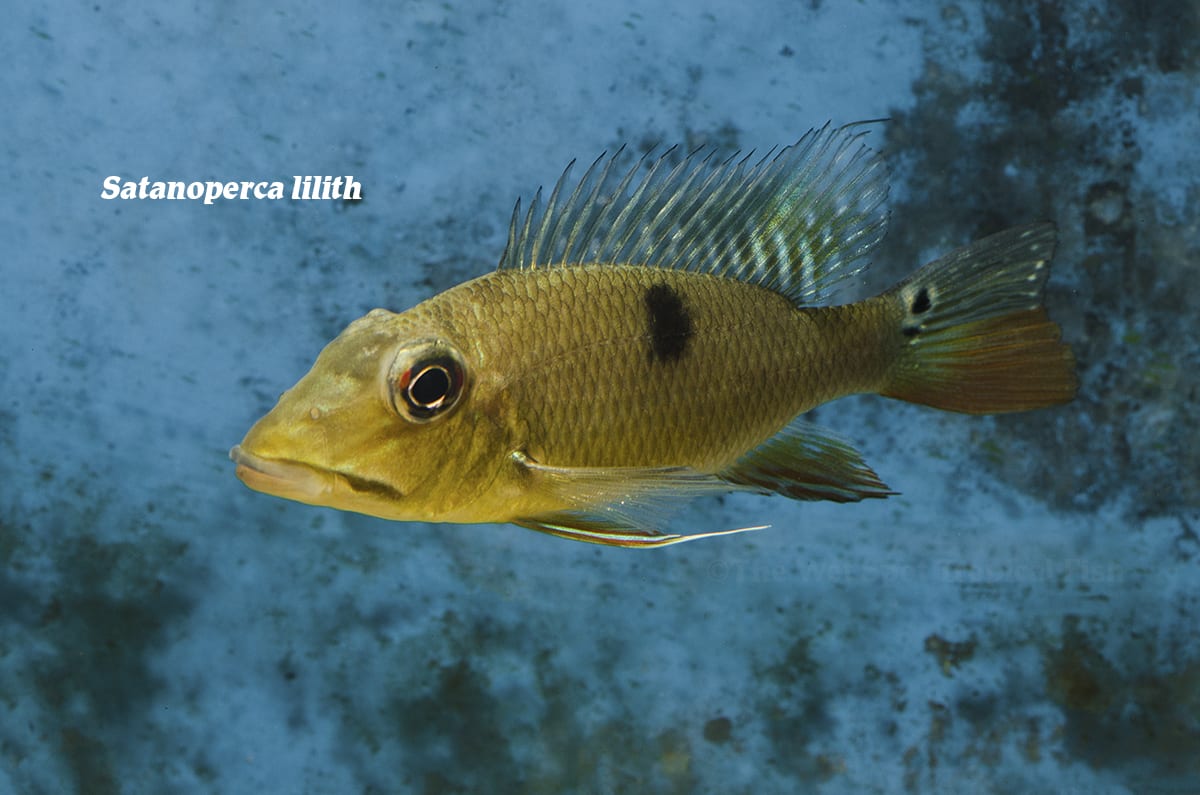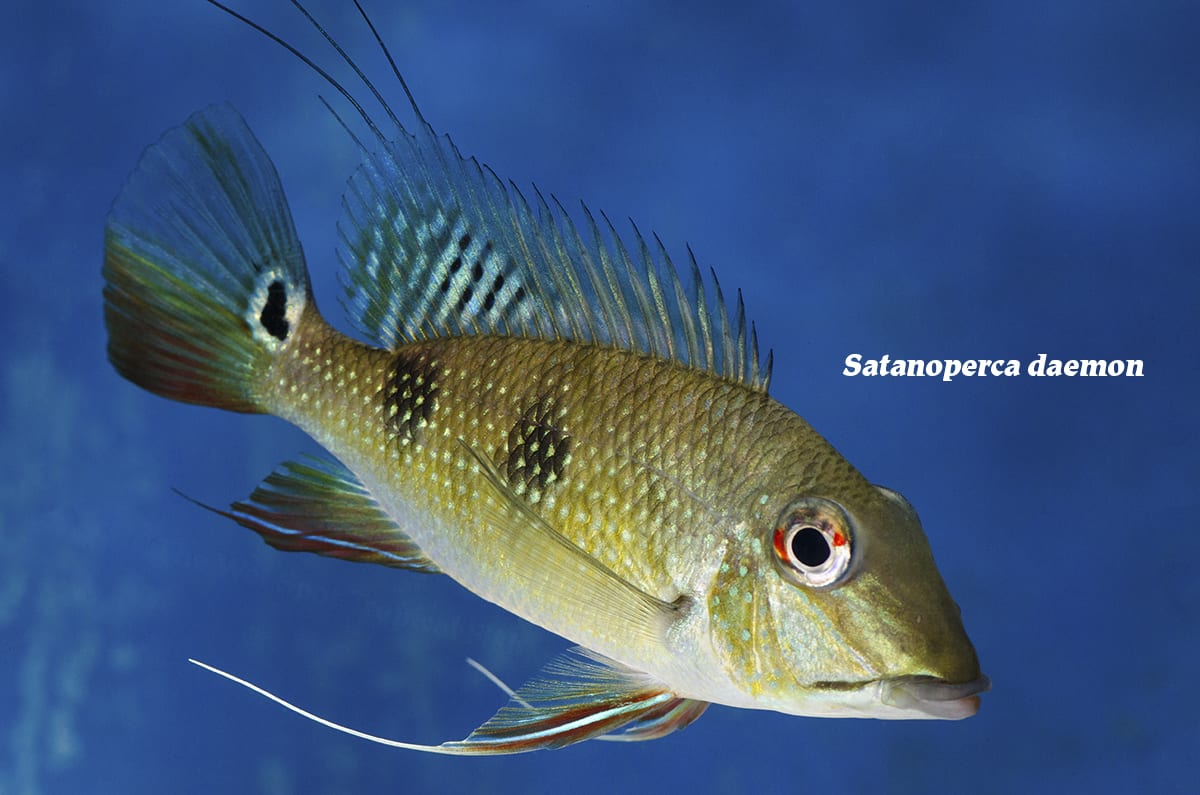Mama’s Lil’ Devils
Mama’s Lil’ Devils
As in any hobby, there are levels of commitment for keeping freshwater fish in aquaria. When starting or growing your tanks, every aquarist should think about how large their tank is, the type of equipment they have or are willing to purchase, and most importantly, how much time they are willing to dedicate to tank maintenance. Beginners with little time and less resources are encouraged to keep fish that are tolerant to a range of water conditions and are hardy enough to survive missed water changes. For those who are looking for a more serious commitment, larger ornamental fish that require specific water conditions and extra attention, become an option. Here at The Wet Spot, we are familiar with the gratification earned when watching healthy ornamental cichlids venture from the hiding places of their well-developed habitats to check out what their stewards are up to in hopes of tasty offerings. In our opinion, there’s nothing better, and for those with serious aquarist aspirations, we have seemingly infinite recommendations!
Eartheaters, for instance, are a wonderful and variable group of South American cichlids who obtain their sustenance in the curious way of gulping sandy or muddy substrate, and allowing the non-edibles to escape through gill slits as they swallow the tasty bits. This group of cichlids is the taxonomic home to species suitable for aquarists with a range of experience levels, though today, we’ll focus on those that are hard-won. The genus Satonoperca, aptly named as “devil’s perch”, for the precarious placement of the 8 species on their branch of the taxonomic tree. Also known as “demonfish”, the physical hallmarks of this genus are dark black spots on their sides, large, spiny fins, shiny metallic green-blue scales, and a size of up to 10 inches in length.
These little devils are quite needy, with strict requirements for water quality, tank setup, and diet. Requiring large tanks with bases of at least 80” X 24”, these cichlids do best in setups with Reverse Osmosis (RO) filtration systems, and peat filtration, along with frequent water changes. The most essential tank accoutrement is soft sandy substrate for natural browsing, dim lighting, scattered leaf litter, roots, driftwood, and branches. Additionally, fish of this genus have strict dietary requirements. Stomach contents of wild specimens indicate they are omnivorous, and in captivity they should be fed regular meals of daphnia, mosquito larvae, brine, and bloodworm alongside gelatin-bound prepared foods. Prepared foods should have a large quantity of vegetal matter like Spirulina, fresh fruit, and pureed shellfish cut into small, bite-sized disks. To encourage natural browsing behavior, these fish should be fed 3-4 small meals daily rather than 1 larger portion. High demands aside, these fish are well worth the effort, each species uniquely beautiful and a joy to observe. A few of our favorite divas from this genus include Satanoperca lilith, Satanoperca daemon, and Satanoperca acuticeps.
Scientific NameSatanoperca lilith
Common NameNone
Temperature / pH68 to 82°F / 5.5 to 7.5 pH
Native LocationAmazon basin
Preferred DietOmnivorous
Native to the black and clearwater channels of the Amazon River in Brazil, S. lilith spends its days in submerged tree branch tangles emerging to browse the sandy and muddy substrate. Exhibiting shiny-green scales, this fish has a dark circular spot on its side, and one more near the base of its caudal fin, and red fins. This species is surprisingly peaceful, and will not consume tank mates larger than a couple cm in length, and are best kept in groups of 5 to 8 conspecifics. They are often kept alongside freshwater stingrays, and should distinctly not be kept with territorial substrate-dwelling species. Optimal water conditions include temperatures between 68 and 82°F, pH of 5.0 to 7.5, and hardness of 18 to 179 ppm.
Scientific NameSatanoperca daemon
Common NameDemon Fish
Temperature / pH75 to 82°F / 3.5 to 6.0 pH
Native LocationRio Negro
Preferred DietOmnivorous
One of the most popular species of this genus, S. daemon, is particularly striking. Found swimming the blackwaters of the Rio Negro watershed of the western Amazon basin, this fish stands out against its tannin-stained habitat. With 4 large dark spots along its side, metallic blue scale pattern, rainbow fins with red, blue, purple, and yellow, this cichlid’s beauty is unmatched. Particularly peaceful for a large cichlid, these fish can be kept in community tanks alongside other peaceful species that do well in acidic and mineral rich waters. Existing in loose aggregations in nature, they are best kept in groups of 5 to 8 individuals. Water conditions should be maintained strictly with temperatures in the range of 75 to 82°, pH between 3.5 and 6.0, and hardness of 18 to 90 ppm.
Scientific NameSatanoperca auticeps
Common NameNone
Temperature / pH68 to 82°F / 5.0 to 7.5 pH
Native LocationBrazil
Preferred DietOmnivorous
Of the central Amazon River basin, is S. auticeps. Shimmering with their clear turbid water habitats, these cichlids exhibit sparkling star-like blue scales pocked on tan bodies, with their characteristic 4 dark black spots. Another peaceful and loosely gregarious species, they should be kept in groups of 5 to 8 alongside other peaceful, and non-territorial tank-mates. Waters should be maintained with temperatures between 68 and 82°F, pH of 5.5 to 7.5, and hardness of 36 to 215 ppm.
Looking to step up your aquarium game? Look no further, and call the Wet Spot experts to find the best next-level species for you.


